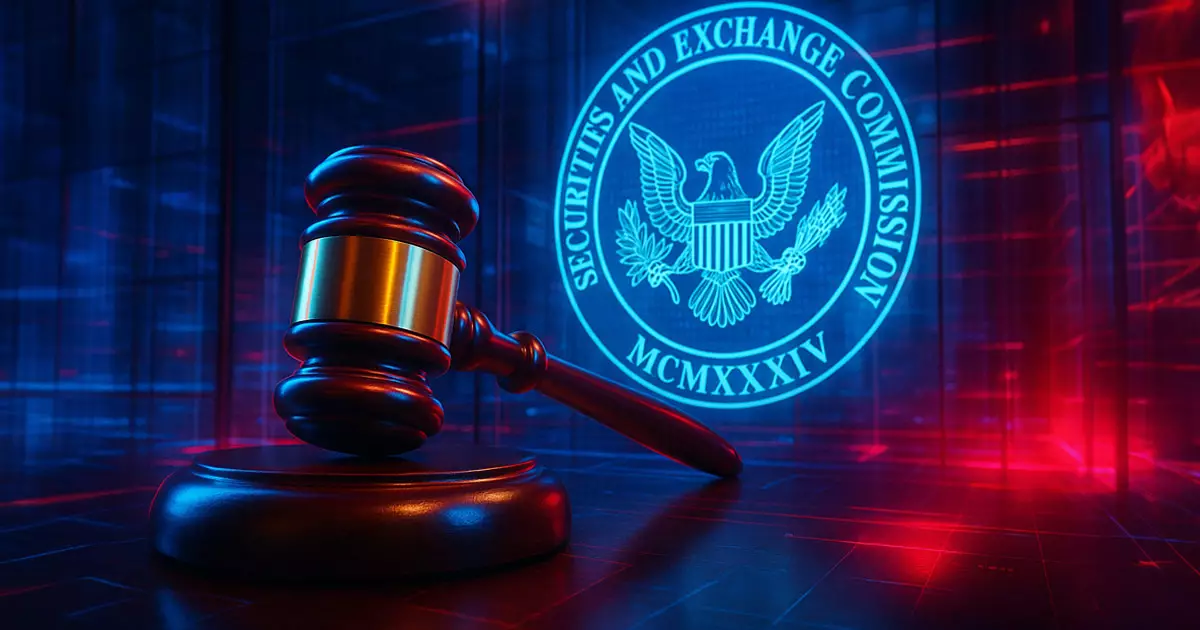In the rapidly evolving world of decentralized finance (DeFi), regulatory clarity is not merely a nicety; it’s a necessity. On April 18, the DeFi Education Fund (DEF) submitted a compelling proposal to the Securities and Exchange Commission (SEC) focusing on five vital principles intended to establish a “token safe harbor.” This framework aims to provide a temporary shelter for DeFi projects attempting to navigate the murky waters of regulation while still striving for full decentralization. This effort is particularly poignant as the crypto world finds itself at a crossroads—between innovation and the overreach of regulation.
Technology-Agnostic Approach: Preserving Innovation
One of the most powerful aspects of the DEF’s proposal is its insistence on a technology-agnostic approach. To define regulations that favor particular technologies would be an unfortunate misstep with potentially dire consequences. By promoting a framework that avoids favoring certain blockchain models, the DEF seeks to ensure that innovation continues unimpeded. Stifling one technological framework over others not only curtails competition but may also lead to a stagnation in the industry. In today’s multi-faceted technological landscape, rigidity in regulatory frameworks can only undermine the very innovation that DeFi thrives on.
Inclusivity for Existing Projects: A Fair Chance to Decentralize
Moreover, the need for inclusivity within eligibility criteria cannot be overstated. The DEF emphasizes that this safe harbor should not only be aimed at new projects but should encompass various existing tokens that are already distributed but still have the intent to decentralize. This forward-thinking proposal ensures that projects initiated before the establishment of comprehensive regulations are not left behind. A regulatory environment needs to evolve in tandem with technology, allowing existing entities a fair opportunity to ensure compliance.
Disclosure Requirements: Strategic Balancing Act
The DEF also draws attention to the delicate balance required in disclosure obligations. While transparency is paramount, early-stage development teams often face uphill struggles in navigating excessive requirements that could overburden them. The proposed focus on essential areas, such as source code, governance structures, and token economics, allows for a level of accountability that does not shackle emerging projects. The conversation around compliance should not be about creating a labyrinth but about facilitating transparency and fostering trust among participants.
The Exit Test: A Clear Route to Decentralization
Another foundational element of the DEF’s proposal is the creation of an “Exit Test.” This innovative mechanism aims to delineate when a project has successfully transitioned to a decentralized model, no longer fitting under the securities umbrella. Transparency, permissionless participation, and user custody of assets are just a few criteria that would help clarify this complex issue. While traditional securities regulation often lacks adaptability, the proposed Exit Test introduces a level of pragmatism essential for DeFi’s growth.
Addressing Secondary Market Protections: Safety in Trading
The DEF also recognizes the importance of protecting secondary market participants during the transition period. The idea that intermediaries, like exchanges and market makers, should not need to register as securities entities is both progressive and necessary. Creating a low-friction regulatory environment would not only foster participation in decentralized markets but also encourage a broader acceptance of digital assets overall. This would mark a significant shift toward legitimizing a space that has too often been met with trepidation.
A Legislative Foundation: The Path Forward
While the DEF’s recommendations serve as an immediate response to pressing challenges within the DeFi sector, they also emphasize the need for a comprehensive legislative framework. Temporary measures, like the proposed safe harbor, can only slow the inevitable legislative tide for so long. A lasting solution will require lawmakers to thoughtfully engage with the intricacies of digital assets.
In essence, the DEF’s proposals to the SEC not only aim to protect existing DeFi projects but also advocate for an environment that nurtures innovation. By emphasizing inclusivity, balanced requirements, and protective measures, the organization has made a strong case for regulatory flexibility that prioritizes creativity over restriction. The challenge ahead is not merely about compliance; it is about catalyzing a future where decentralized finance can flourish within a legally sound framework.
















Leave a Reply